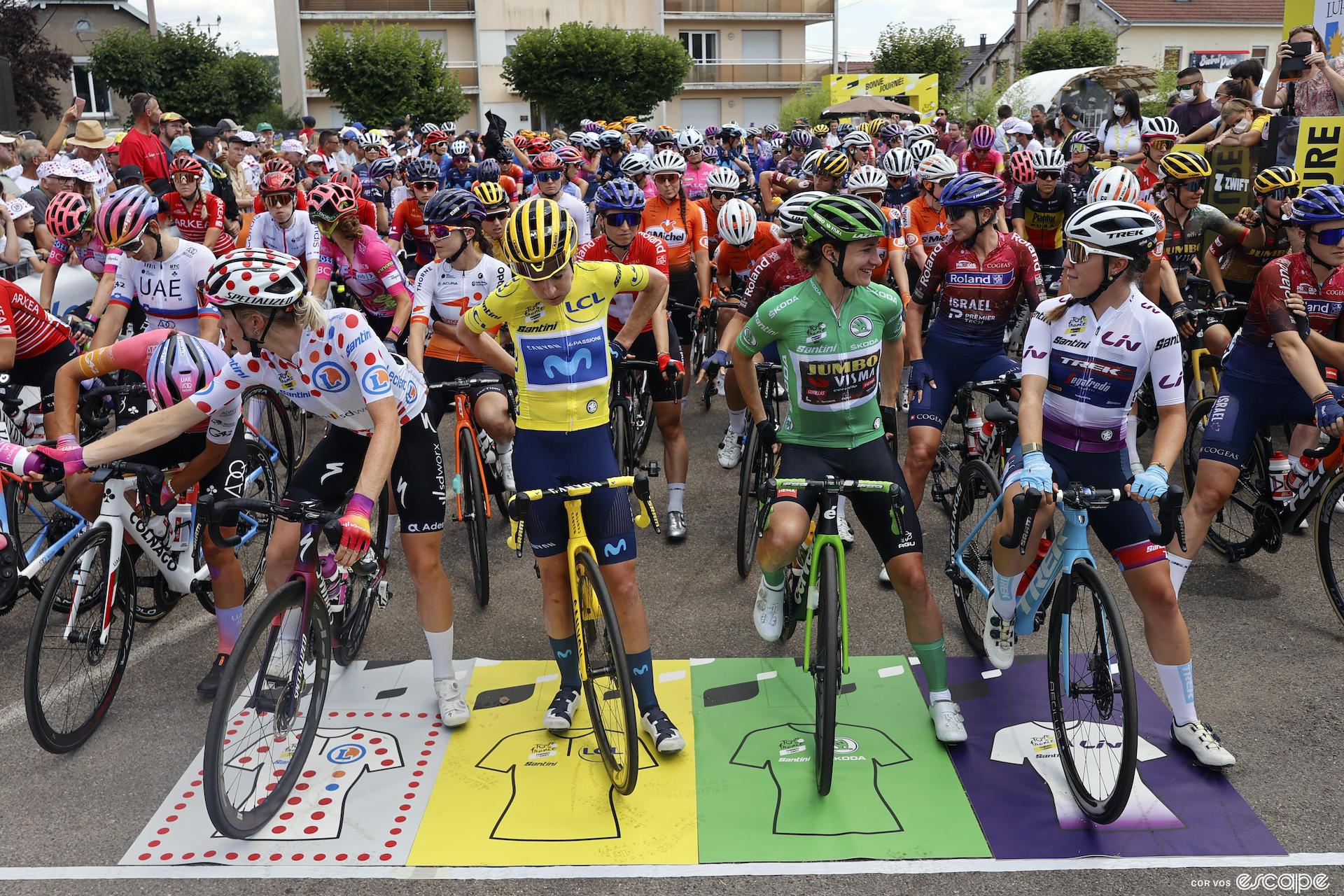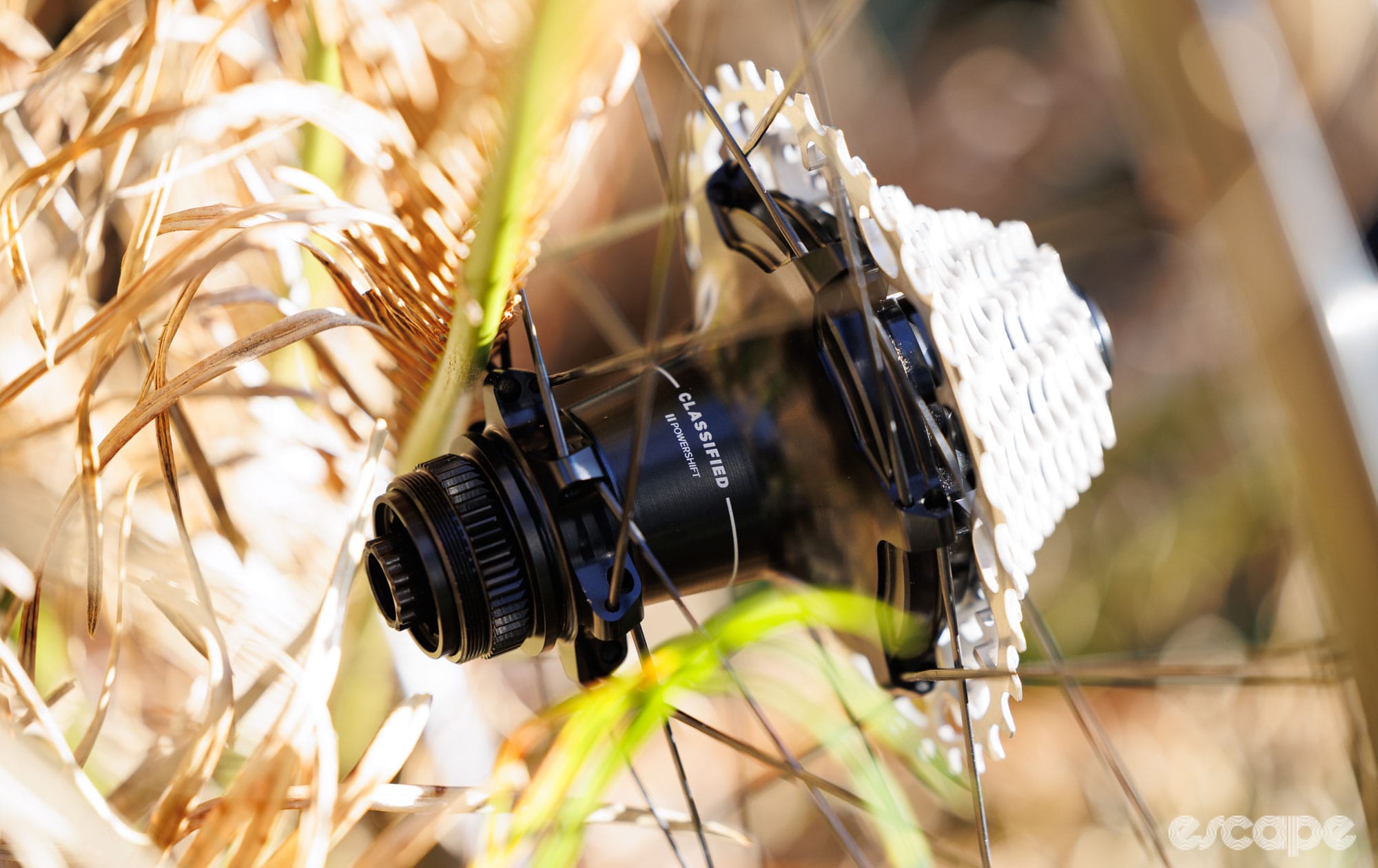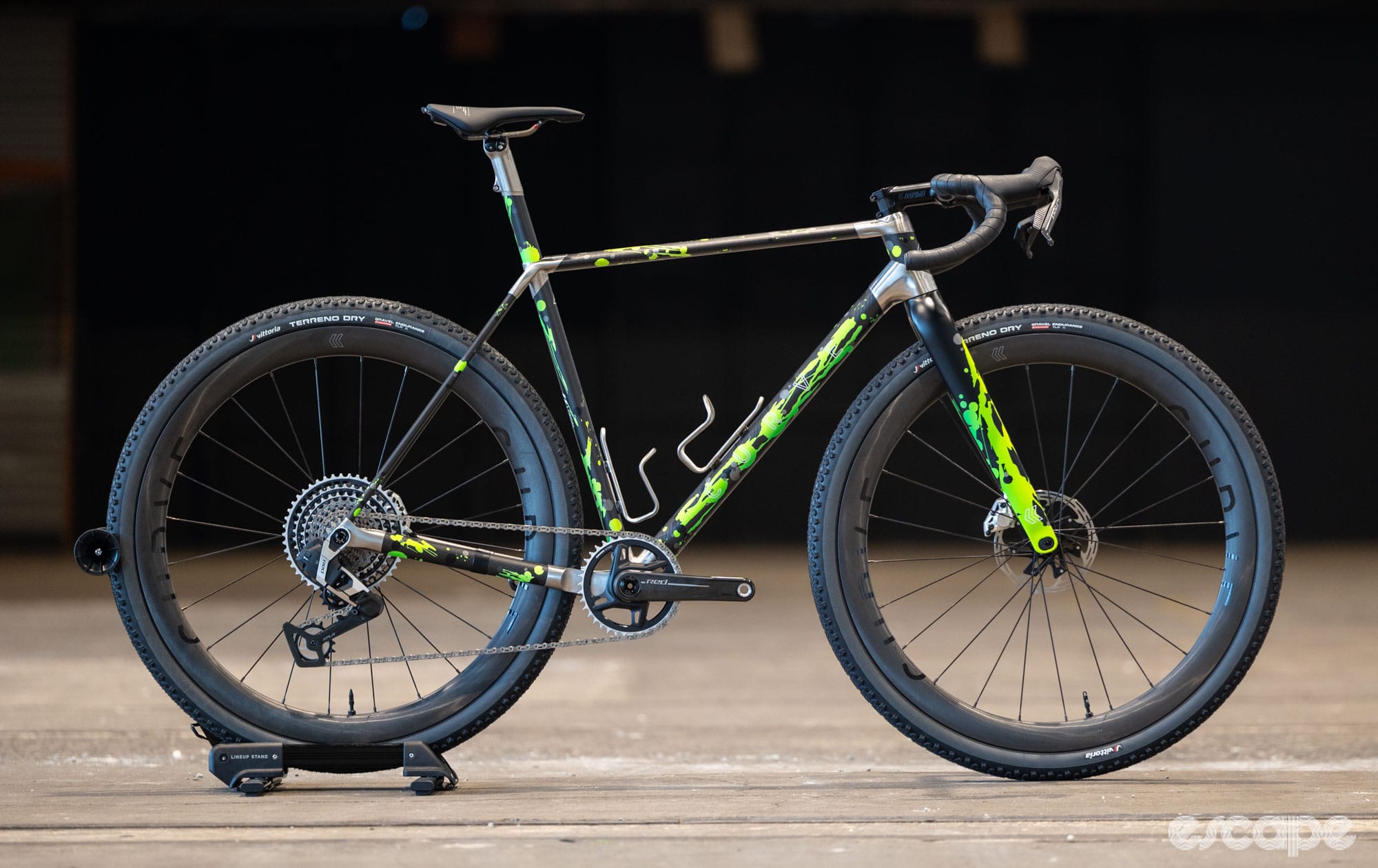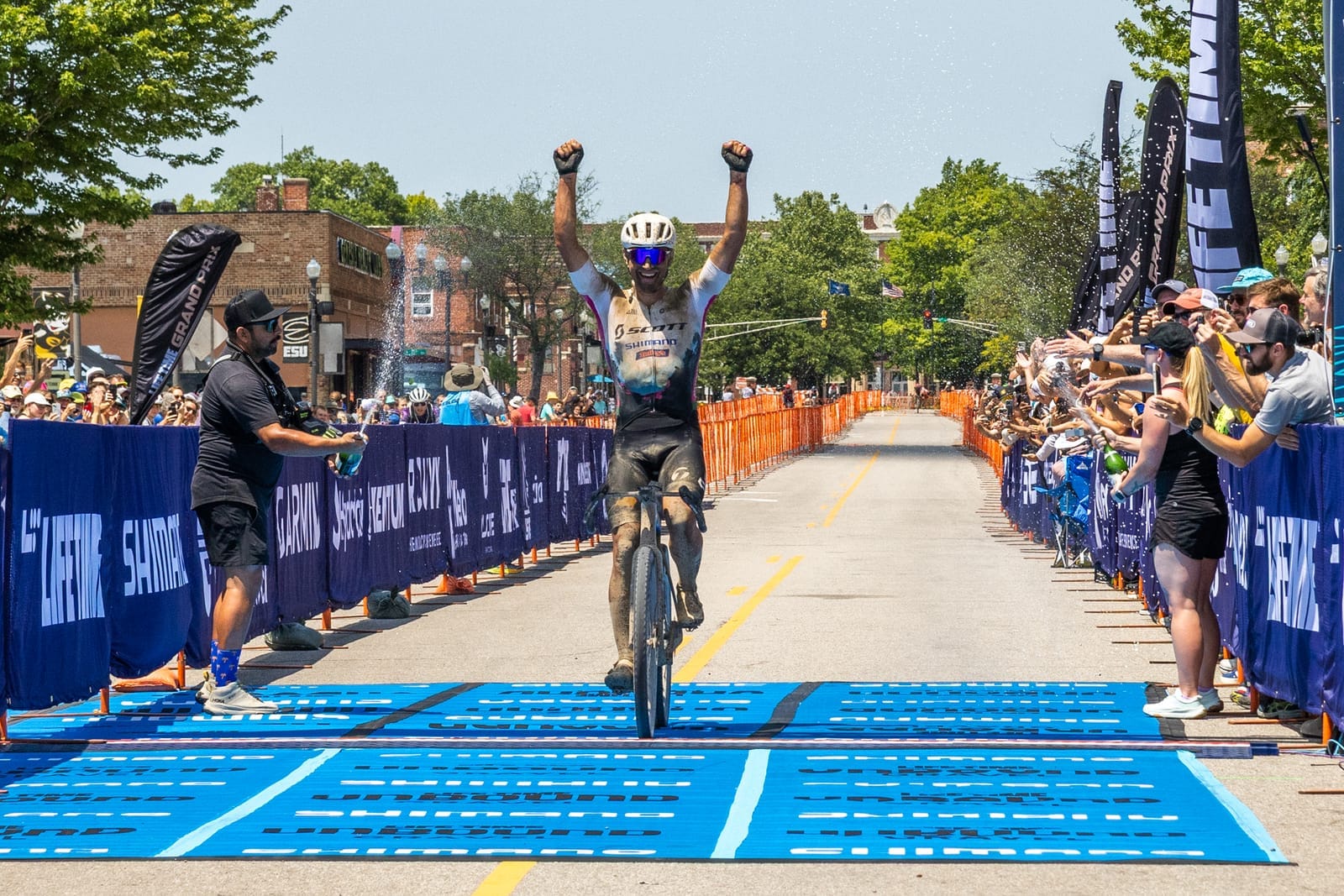It's not long now until the Tour de France Femmes avec Zwift and somehow the hype is even more overwhelming than for last year’s inaugural edition. For the first edition of the Femmes, people didn’t quite know what to expect. It was a combination of scepticism and excitement that the women would finally have a multi-day event attached to the name “Tour de France”.
By the third stage of the 2022 edition, the race had more than lived up to expectations. Every stage was edge-of-your-seat excitement, every rider could feel the Tour de France effect. So when teams started to plan the 2023 season it was a natural decision to build everyone’s seasons around the Femmes; whether or not riders will do the race, their summer was structured around it, for better or for worse.
Riders who used to put everything into the Giro Donne, the longest race on the women’s calendar, turned their attention to France. Ahead of the race, it’s clear the biggest general classification battle we’ve seen in years will take place at the Femmes. Not just the Annemiek van Vleuten vs. Demi Vollering showdown everyone has been waiting for since La Vuelta Femenina in May, but Ashleigh Moolman Pasio and Kasia Niewiadoma, to name two other GC hopefuls, are also throwing everything into preparing for the eight days of racing in France.
The race will play host to the fastest women in cycling, and for the first time, it will have a little something for everyone. There are high mountains, guaranteed sprints, and even a time trial to close out the event. So without further ado, here’s everything you need to know about the stages of the 2023 TdF Femmes.
• Stage 1: Sunday, July 23 – Clermont-Ferrand (123.8 km)
• Stage 2: Monday, July 24 – Clermont-Ferrand to Mauriac (151.7 km)
• Stage 3: Tuesday, July 25 – Collonges-la-Rouge to Montignac-Lascaux (147.2 km)
• Stage 4: Wednesday, July 26 – Cahors to Rodez (177.1 km)
• Stage 5: Thursday, July 27 – Onet-le-Château to Albi (126.1 km)
• Stage 6: Friday, July 28 – Albi to Blagnac (122.1 km)
• Stage 7: Saturday, July 29 – Lannemezan to Tourmalet Bagnères-de-Bigorre (89.8 km)
• Stage 8 (ITT): Sunday, July 30 – Pau (22.6 km)
The basics
The race begins in Clermont-Ferrand (where the men's stage 11 started) on Sunday, July 23 (the same day the men take finish their race on the Champs-Élysées). The peloton will then take on eight stages, including a time trial to conclude the event on Sunday July 30 in Pau.
The most critical stage of the race, aside from the ITT, is the seventh stage which finishes atop the legendary Col du Tourmalet.
Live coverage for the race can be found on GCN+ in most of the world, SBS in Australia (with Wheel Talk's Gracie Elvin!), Peacock in the United States, and FloBikes in Canada. For daily broadcasting times check out our stage-by-stage previews published before each stage.
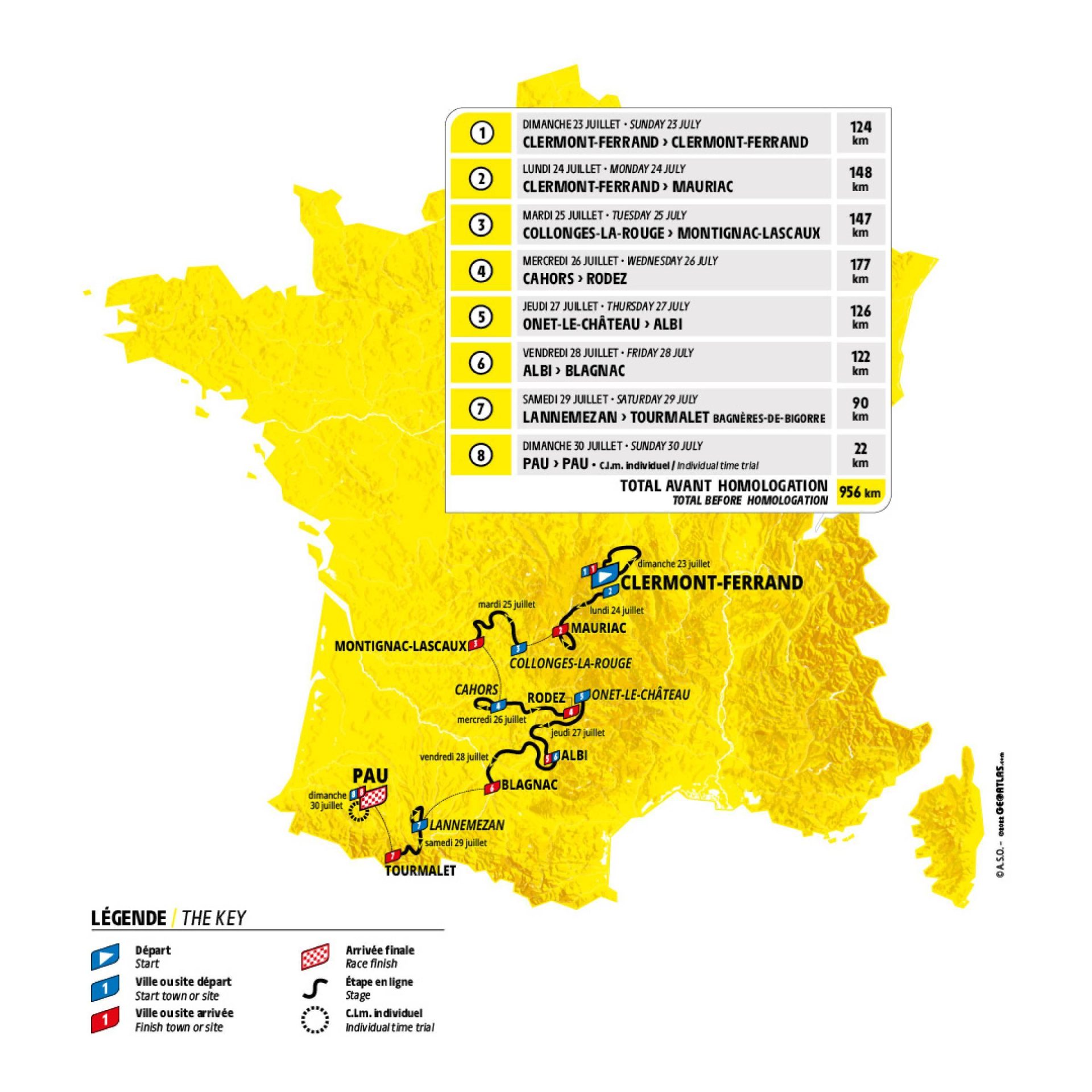
Stage 1: Sunday, July 23 - Clermont-Ferrand (123.8 km)
Instead of the women starting their Tour on the Champs-Élysées, like in 2022, the Tour de France Femmes is fully removed from the men’s this year with the Grand Départ taking place in Clermont-Ferrand.
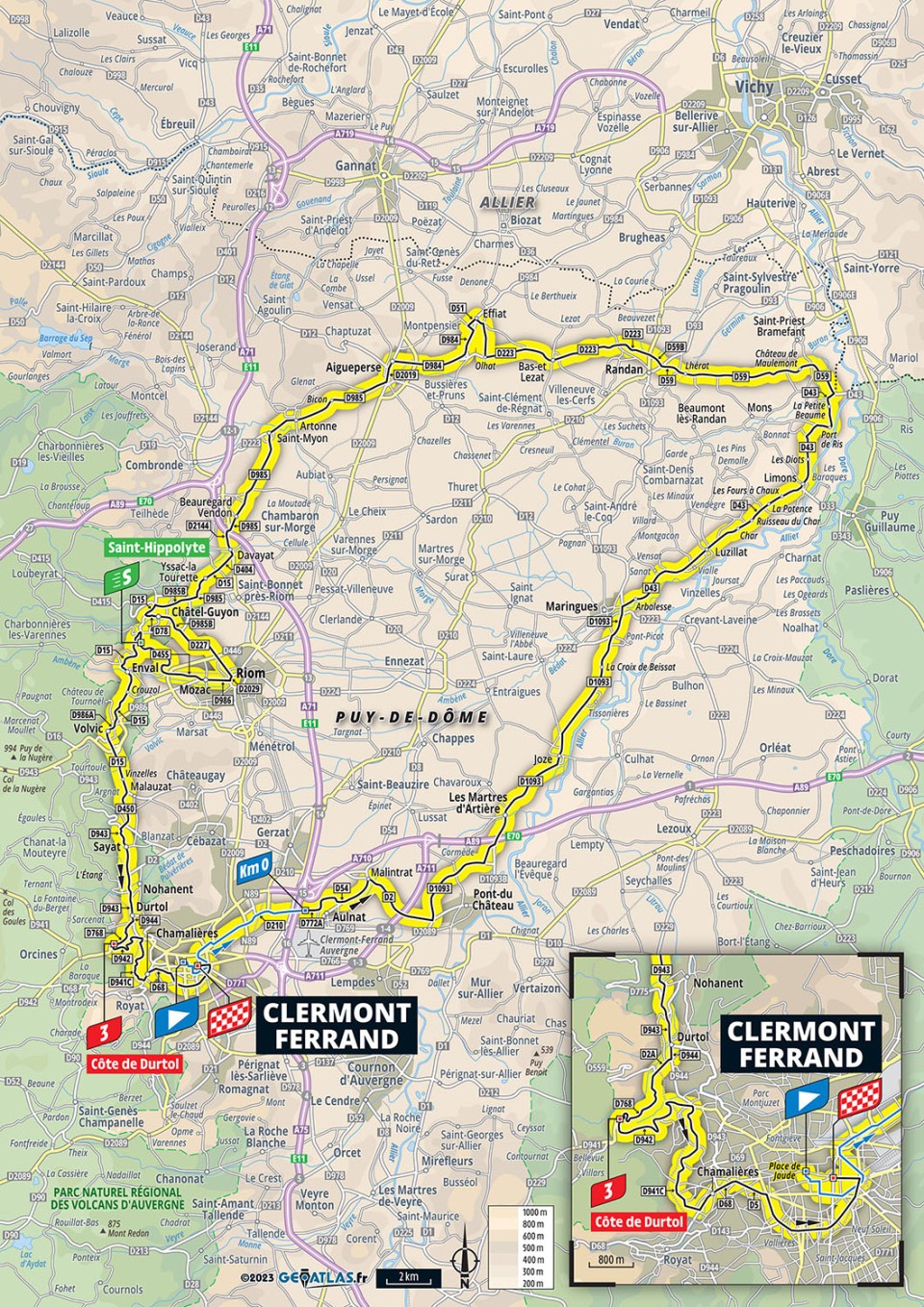
This first stage is not your typical stage 1 sprint day; instead, the women will tackle a Category 3 climb only 9.3 km from the finish. That climb, Côte de Durtol, is only 1.7 km long – nothing that will cause a massive upset in the general classification on the first day, but at 7.2% it will challenge the sprinters.
It’s also not the only climb of the day. The road rises before the peloton technically gets to the base of the climb so in reality it’s longer than 1.7 km. Plus, with the first yellow jersey up for grabs, many riders who will not get to play with the general classification in the coming days will have their sights set on the finish in Clermont-Ferrand.

Who to watch out for: The way she’s climbing, and with her killer instinct, it’s hard to look past Lorena Wiebes to take the first stage, just like she did in 2022. There are few that can compete against the European champion, and with SD Worx fully backing her she will be nearly unbeatable on this first stage.
Rest assured the likes of Lidl-Trek and Movistar will do their best to keep Wiebes out of that first yellow jersey. Maybe Canyon-SRAM can even give the stage a go.
Stage 2: Monday, July 24 - Clermont-Ferrand to Mauriac (151.7 km)
The second stage is on the longer side at 151.7 km, although not the longest in the race; that will come on stage 4. Starting where they left off a day before in Clermont-Ferrand, the women will race to Mauriac. Along the way, they will hit four Category 4 climbs, one Category 2, and a Category 3 to finish it off.
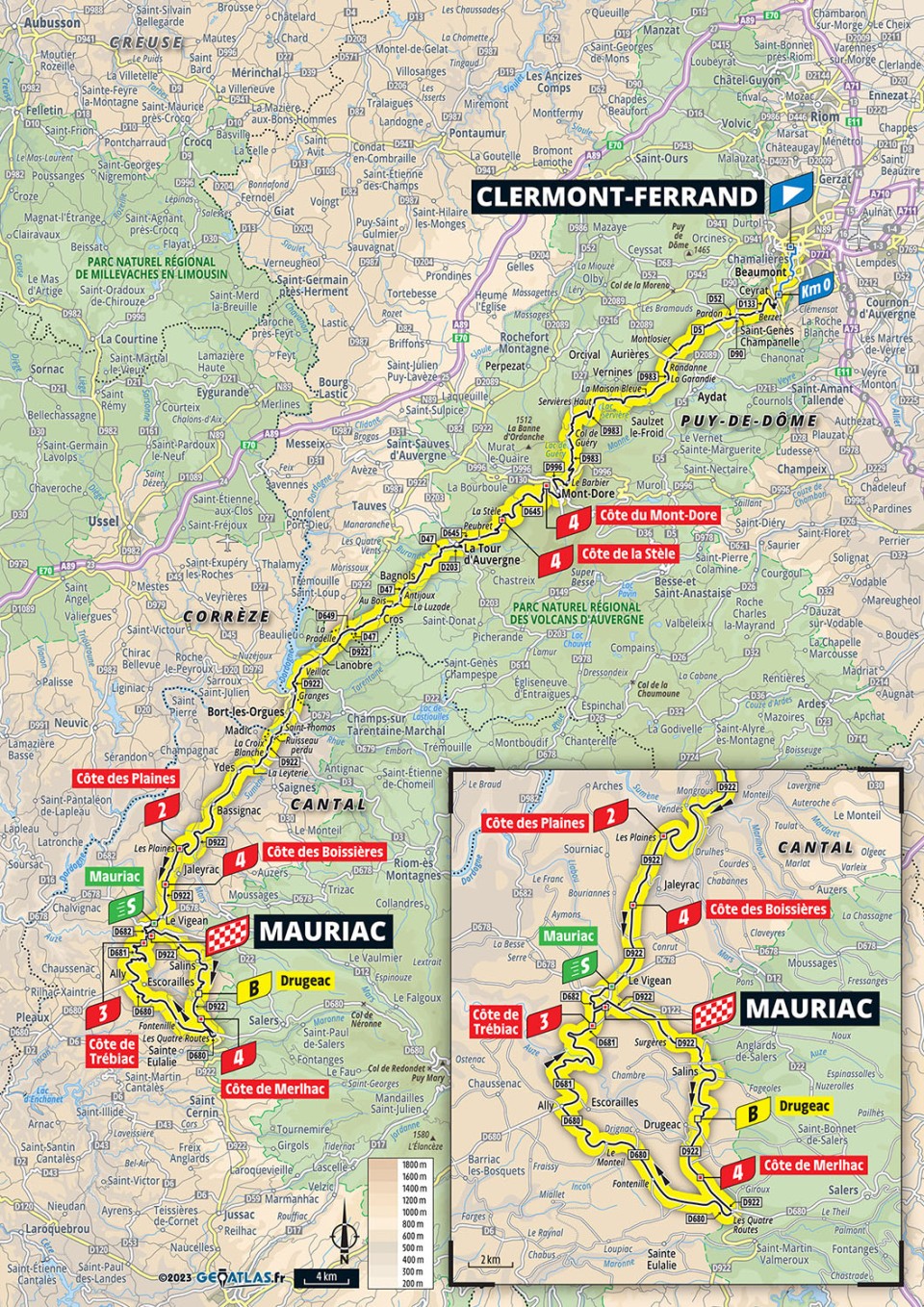
The stage also doesn’t ease into the climbing – it starts from the gun, with a roughly 32 km-long uncategorized ascent before the women even hit the first Category 4 climb, the Côte du Mont-Dore. The Côte de la Stèle comes quickly after, a 1.8 km ascent that averages 5.1%. Neither will do massive damage but in quick succession they won’t feel good after such a hard start to the stage.
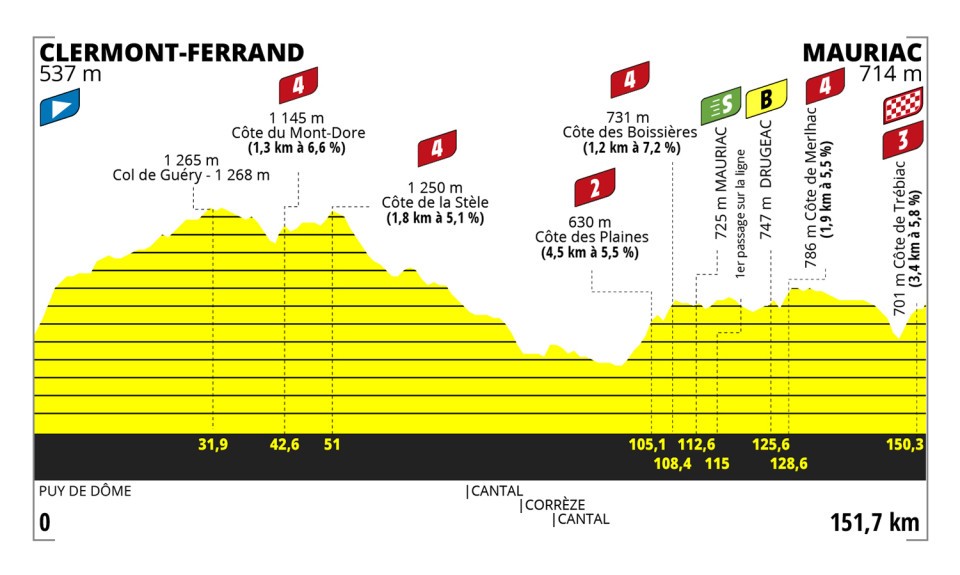
The Category 2 Côte does Plaines is only 4.5 km long at 5.5%, another not-so-hard climb, but it kicks off a challenging run to the finish that leads right into the 1.2 km-long Côte de Boissières, which averages 7.2%. From here the up-and-down terrain never stops – while there are only two more categorized climbs on the route there are a host of non-categorized climbs before the finish.
The final ascent to the line, Côte de Trébiac, is 3.4 km long and 5.8%. The climb tops out about 1 km from the finish, so while it’s not technically a hilltop finale it is not enough road to bring back a move that goes on the ascent. The fastest time up Côte de Trébiac is 11:41, set by EF Education-TIBCO-SVB’s Magdeleine Vallieres.
Who to watch out for: It’s an excellent finish for GC favourite SD Worx’s Demi Vollering, but there are a few other women who excel on a finale like this. Cecilia Uttrup Ludwig of FDJ-Suez and Ashleigh Moolman Pasio (AG Insurance-Soudal Quick-Step) will definitely have an eye on the second stage, especially if the yellow jersey is within reach. Elisa Longo Borghini (Lidl-Trek) has been working on her sprint and it shows. In short, it’s a day for the GC riders, without being a GC day.
Stage 3: Tuesday, July 25 - Collonges-la-Rouge to Montignac-Lascaux (147.2 km)
The third stage is maybe, possibly, a day for the sprinters, but it still ain't flat. Over the 147.2 km from Collonges-la-Rouge to Montignac-Lascaux the women will race up four Category 4 climbs, the longest of which comes only 23 km into the day. The final 55 km are flat, so should the peloton regroup or stay together over the climbs it will be a fast finish in Montignac-Lascaux.
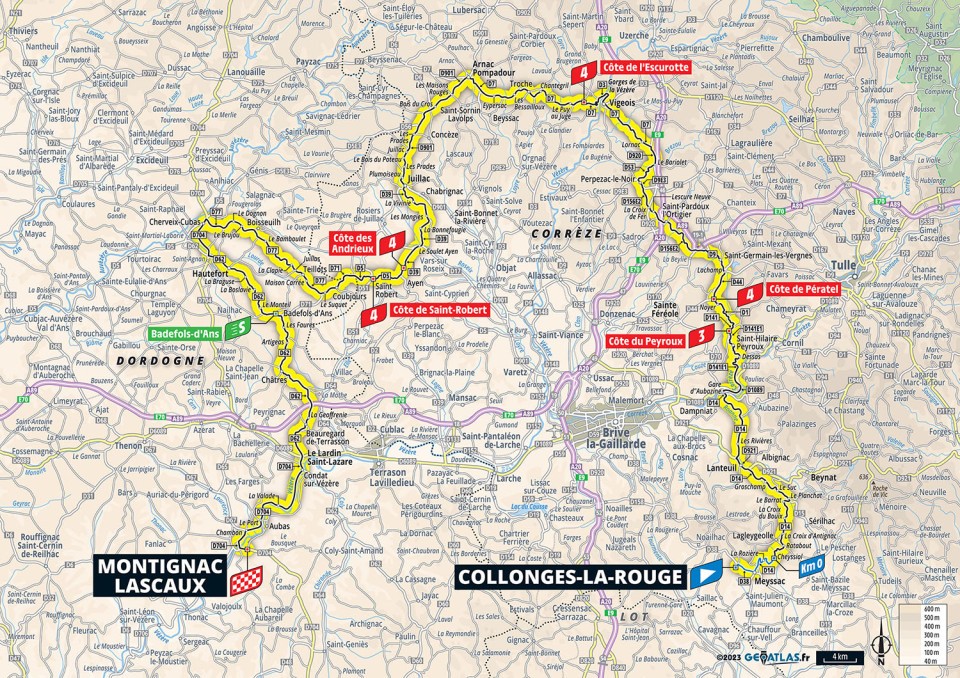
None of the four climbs are too bad, with the steepest coming at the end of the four. The Côte de Sant-Robert is still a ways away from the finish so the 1.1 km, 6.2% ascent isn't something that will impact the likes of Wiebes or Marianne Vos.

What might impact the sprinters' chances is a gutsy breakaway. If they're able to get a good gap before that final climb they will have a shot at making it all the way to the end. But remember the Giro Donne at the beginning of July was so fast a break never got a chance to play for the win. Every stage was won by either the GC favourites or from a bunch kick, and the Femmes will likely go the same way.
Who to watch out for: If it's a sprint, it will be a battle between Wiebes, possibly Charlotte Kool, and the G.O.A.T. Marianne Vos. If it's a breakaway that manages to get away, it's up in the air – it could be anyone! (That's why breaks are fun.)
Stage 4: Wednesday, July 26 - Cahors to Rodez (177.1 km)
On Wednesday the women take on the longest stage of the race, and the longest stage of a women's race since last year's Femmes. Stage 5 of the 2022 event saw a heavy crash impact the race with 40 km to go and the stage, in general, caused a lot of annoyance in the peloton. Not because the women can't race this distance but because the women's peloton is known for its short but explosive races and the length made the stage boring and uneventful (their words, not mine).
At 177.1 km, the stage is almost 2 km longer than last year's longest stage, and with the heat in France this time of year it's likely to be a brutal day in the saddle for the women.
The hardest parts of the stage come at the end, so fueling in the opening 85 km will make or break the rest of the Femmes.
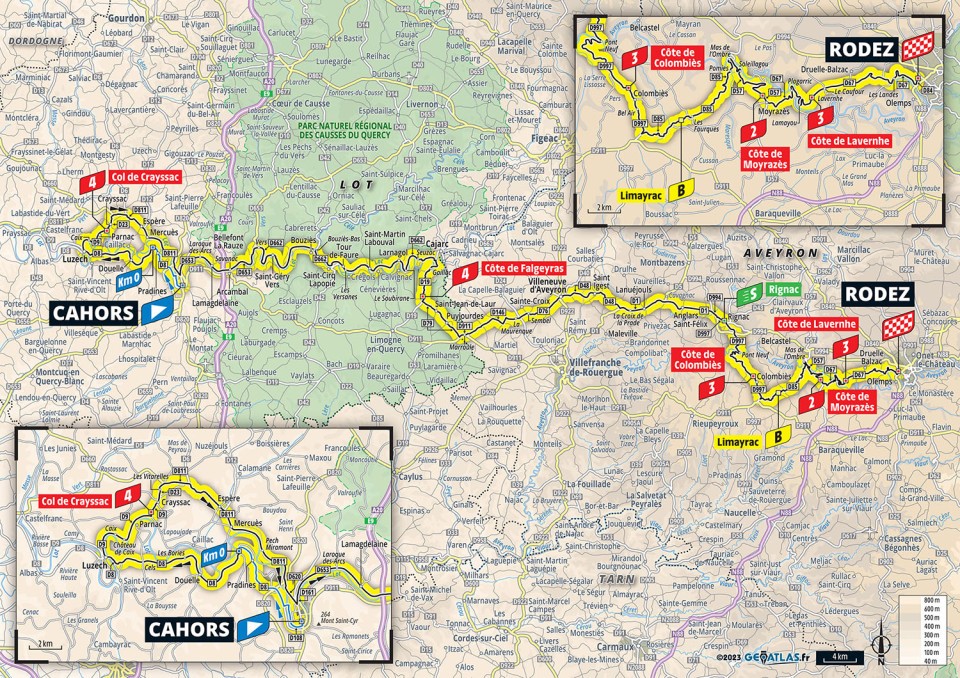
The first half of the stage includes only one climb, the Col du Crayssac, but at 2.3 km with over 160 km to go it will hardly feel significant. Côte de Falgeyras is where the day starts to get a bit more challenging. From this 3 km-long Category 4 climb the profile never quits.
The 6.5 km Côte de Colombiès starts with roughly 41 km go to, and six more kilometres after the summit is an intermediate sprint with bonus seconds up for grabs. Then the 4.6 km Category 2 Côte de Moyrazès and the Category 3 Côte de Lavernhe are packed into the final 17 km, making for a super aggressive and slightly terrifying finale. With a profile like this, it's unlikely the peloton will be grumbling about a boring stage Wednesday evening.
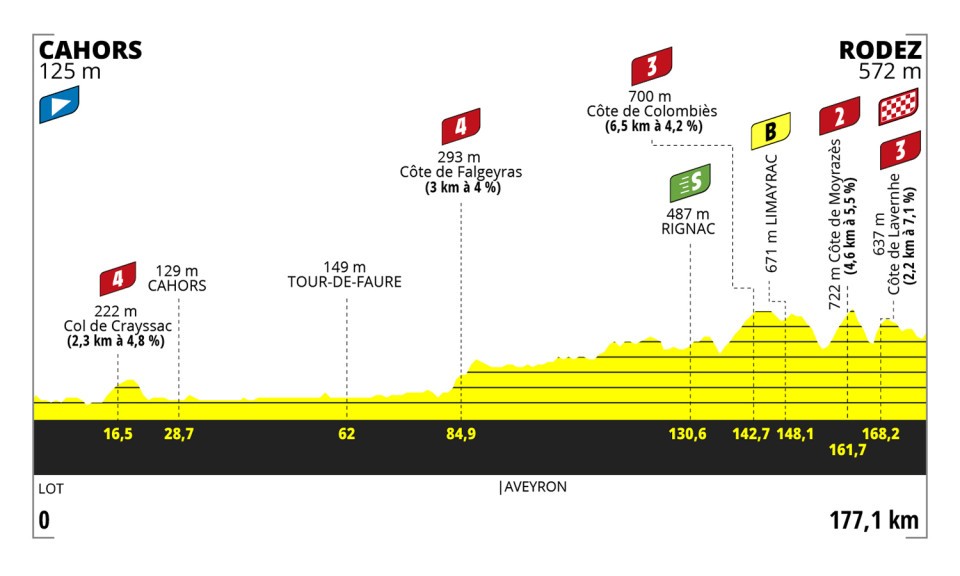
Who to watch out for: Again it's a day for the GC favourites even if it isn't a traditional GC day. Look to Longo Borghini to make a move on the final two ascents, and Annemiek van Vleuten (Movistar) to attack on that second Category 4. With the way Vollering was climbing earlier in the year, Van Vleuten (who absolutely loves this kind of distance) will bookmark this stage as one to try to outsmart her rival.
Another rider who may excel on a finale like this is Kasia Niewiadoma. The Canyon-SRAM rider is a fantastic descender so the downhill finish is great for her.
Finally, if it's not a GC rider, it could be a great day for Lotte Kopecky. The SD Worx rider will definitely be aiming to win at least one stage, and with Wiebes on her team, she will need to put her hand up for a day that isn't a sprint stage and isn't a GC stage. Stage 4 falls in this category.
Stage 5: Thursday, July 27 - Onet-le-Château to Albi (126.1 km)
Stage 5 from Onet-le-Château to Albi dips into a familiar distance for the women at 126.1 km. It's another who-knows type stage, with some uncategorized climbing to start the day followed by two Category 3s and a Category 4.
The final 1.6 km ascent is 24 km from the finish, so it's not quite as tight a turnaround as the first stage.
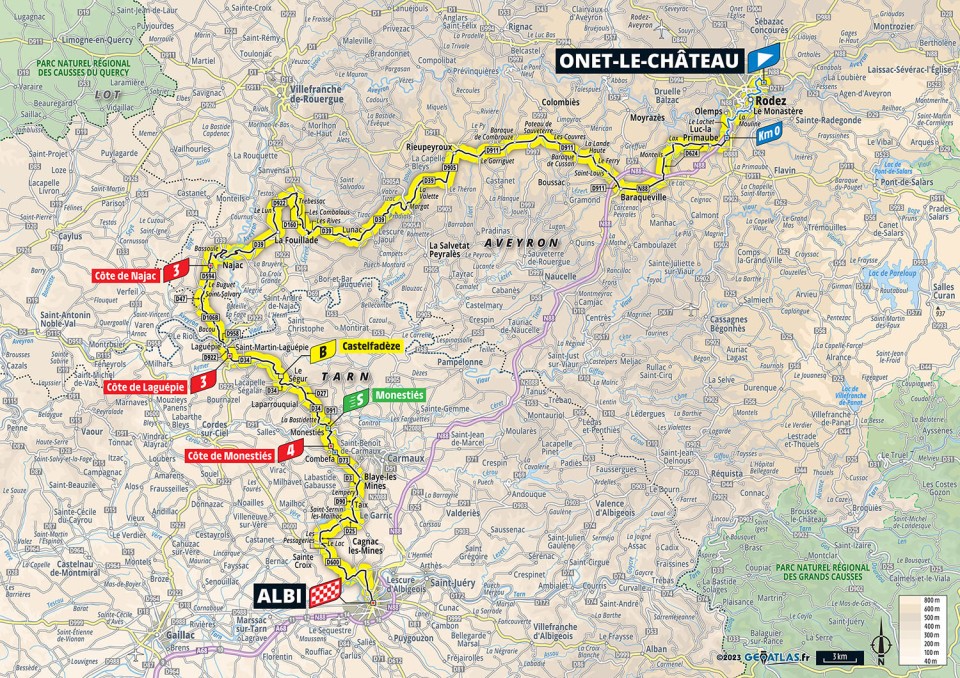
After the long fourth stage, this one could be a day for the break. By this point in the race, and with a nearly surefire sprint stage to come on stage 6 followed by the real GC battle, if there was a day that is almost guaranteed to be a breakaway day, it's Thursday.
The longest climb of the day, the Côte de Najac, is well placed just after the halfway point in the stage, and the final climb is only 1.6 km long and averages 6.4% – not terrible.
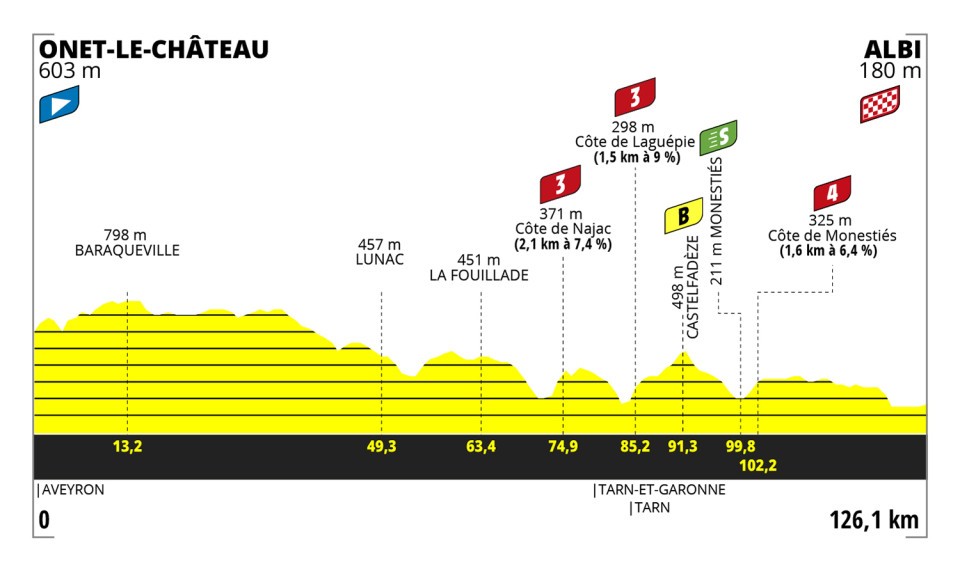
Who to watch out for: Instead of naming every rider who would love to win a stage of the Femmes from a breakaway (no one has time for that) I will instead list teams who will want stage 5 to end in a break. Look out for the WorldTour teams fighting to stay on the good side of the relegation line: Uno-X, Human Powered Health, Jayco-AlUla, LifePlus-Wahoo, and Israel-Premier Tech-Roland.
Stage 6: Friday, July 28 - Albi to Blagnac (122.1 km)
With only three stages to go legs will really be feeling it by the sixth stage of the Femmes. Riders will be happy to know the four Category 4 climbs scattered throughout the 122.1 km from Albi to Blagnac range from 1 to 2.8 km long, and none tip over a 6% average.
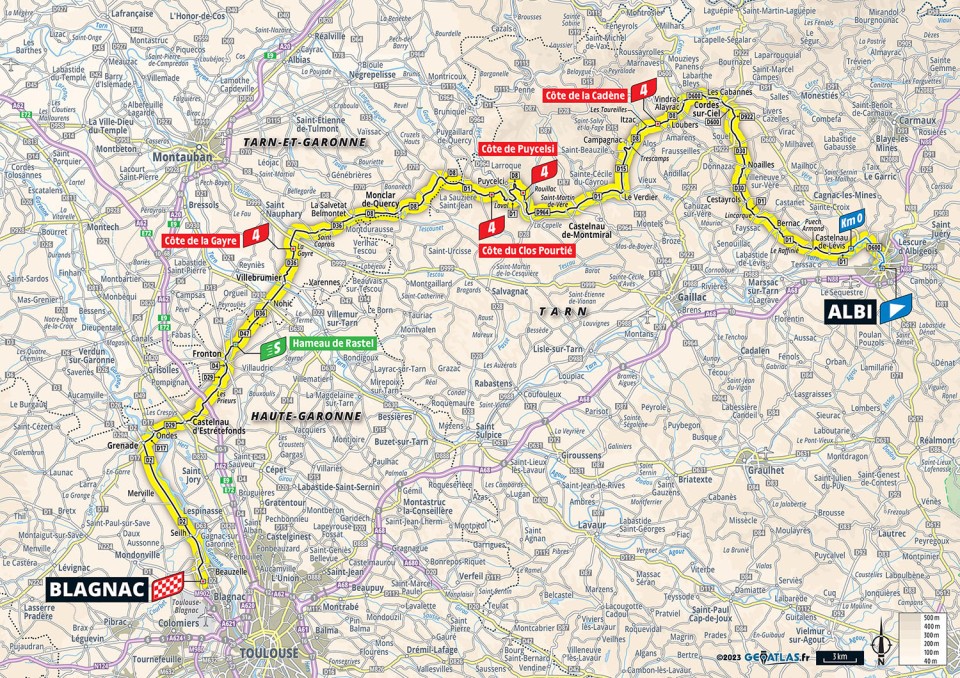
With the final climb, the Côte de la Gayre, being nearly 30 km from the finish, the flat run-in to the line in Blagnac favours the sprinters. And since the next two stages will turn towards the general classification, it's the final chance for the fast women to take the stage.
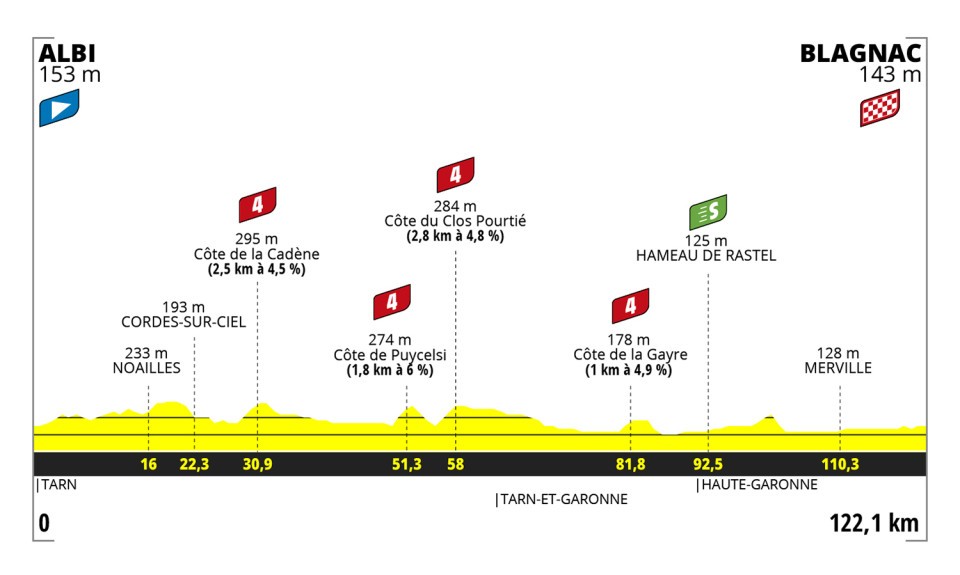
Who to watch out for: I sound like a broken record but it's just really hard to beat Wiebes if the finish is fast. Still, Emma Norsgaard (Movistar), might want to try her hand, or Kool if she starts for DSM-Firmenich. Fresh off a stage win at Giro Donne, Chiara Consonni (UAE Team ADQ) might also want to try for this stage.
Stage 7: Saturday, July 29 - Lannemezan to Tourmalet Bagnères-de-Bigorre (89.8 km)
The big one. The one we've all been waiting for. The Tourmalet.
The seventh stage is the first traditional GC stage of the race and with the 17.1 km-long ascent to the finish, the road will turn into a playground for the Vollering vs. Van Vleuten showdown everyone is dreaming of.
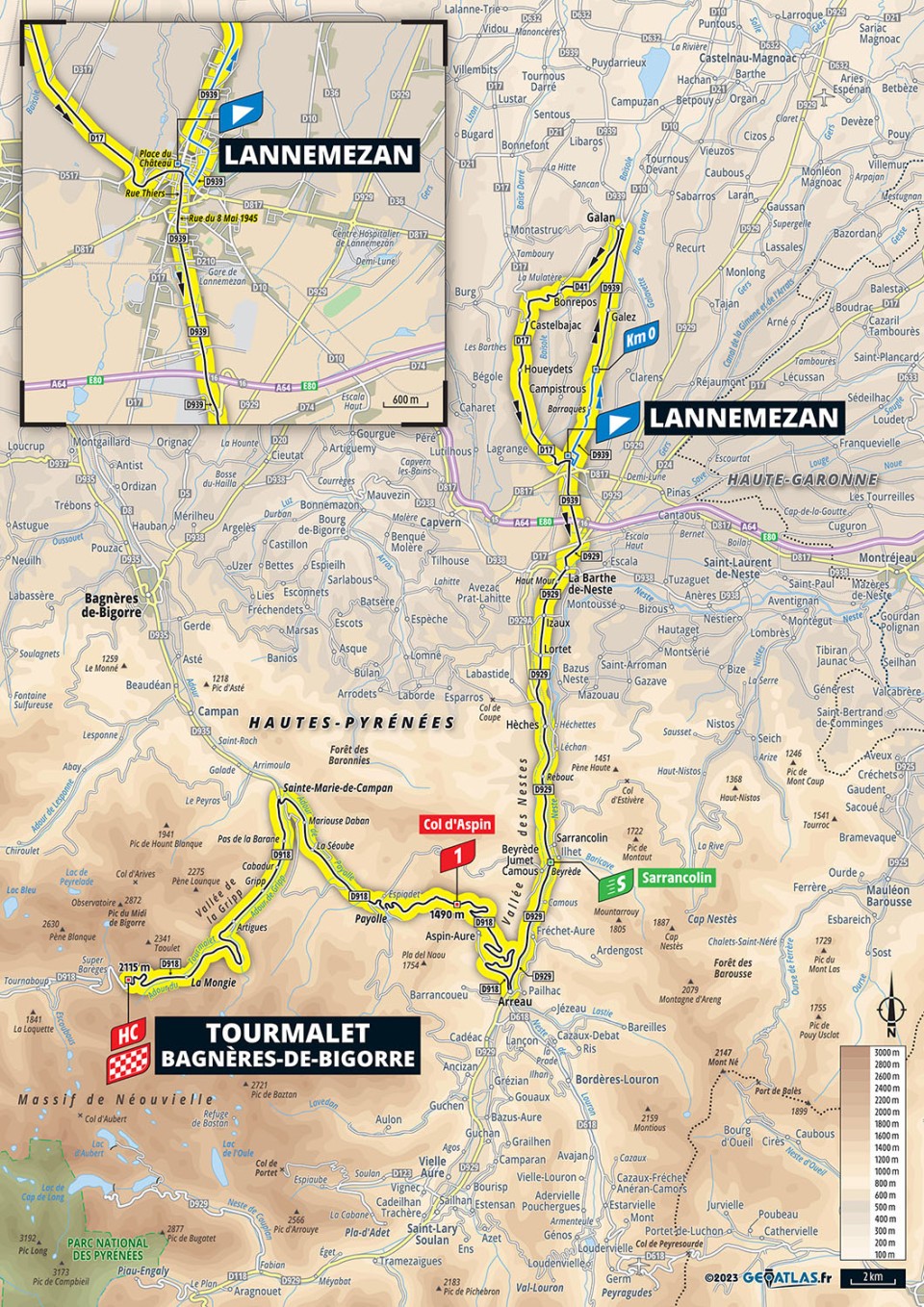
Before the women even start climbing the Tourmalet they will first climb the Col d'Aspin. At 12 km long and 6.5%, the battle will start long before Sainte-Marie-de-Campan. The stage profile brings back memories of the final stage of the 2022 Femmes that finished atop La Super Planche des Belles Filles and was won easily by Van Vleuten.
The Tourmalet isn't as steep as La Super Planche des Belles Filles but still has sections of 16%. The top boasts sections of 10%, so it's not like it eases near the finish. It's going to be a beautiful stage.
There are 45 km of racing before the women start up Col d'Aspin – plenty of time for teams to try to send a rider in front of the race before the climb. A lot can happen in 45 km especially if there are two leg-breaking climbs to come. The descent off the Col d'Aspin is tricky, with a few switchbacks near the end of the descent, and the turnaround between the two climbs is immediate. If anyone who makes it over the top of the first climb loses touch on the descent, they'll need to really get on it to regain contact before fireworks erupt on the Tourmalet.
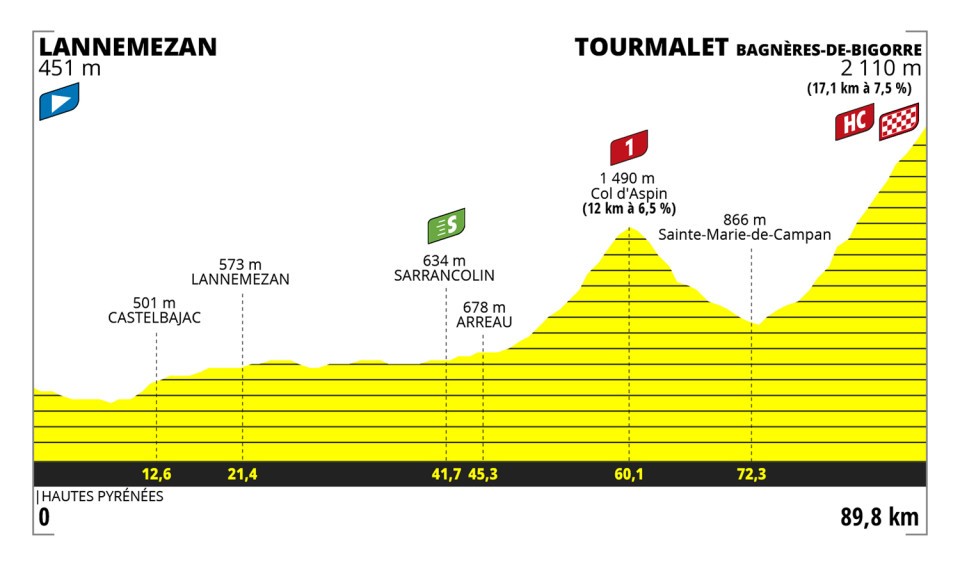
Who to watch out for: It will be either Van Vleuten or Vollering at the end of the day. Many other strong climbers in the peloton will be hoping they can keep up with the two Dutchwomen, like Mavi García (Liv Racing TeqFind), Juliette Labous (DSM-Firmenich) and Gaia Realini (Lidl-Trek) but it will be a challenge to get ahead of the Vs.
Stage 8 (ITT): Sunday, July 30 - Pau (22.6 km)
To wrap up the race the women will complete a 22.6 km individual time trial on the roads of Pau. The route is not too technical, with the exception of a few twists and turns in the city of Pau. Once they get out onto the roads south of the city they will climb one minor hill before descending back towards the city center.

It will be a fantastic way to end the week and one last chance for any GC riders to gain time on their rivals.

Who to watch out for: Marlen Reusser (SD Worx).
OK OK, there are a few other phenomenal ITT specialists out there, like Jumbo-Visma's Reijanne Markus who recently won the Dutch title ahead of Vollering and Van Vleuten. But Reusser is certainly the favourite.
Did we do a good job with this story?

